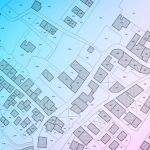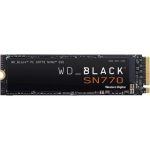An optical microscopy image shows the marine haptophyte alga Braarudosphaera bigelowii with a black arrow pointing to the nitroplast organelle. – TYLER COALE
April 12 () –
An international team of scientists describes, on the cover of Science magazinethe first known nitrogen-fixing organelle within a eukaryotic cell.
The organelle -the structural and functional unit of a cell; for example, mitochondria or the nucleus– It is the fourth example in history of primary endosymbiosis: the process by which a prokaryotic cell is phagocytosed by a eukaryotic cell and evolves beyond symbiosis to become an organelle.
“It's very rare for organelles to arise from these kinds of things“said Tyler Coale, a postdoctoral researcher at UC Santa Cruz and first author of one of the two recent papers. “The first time we thought it happened, it gave rise to all of complex life. “Everything more complicated than a bacterial cell owes its existence to that event,” he added. it's a statement, referring to the origin of mitochondria. “About a billion years ago, it happened again with the chloroplast, and that gave us plants,” Coale said.
The third known case involves a chloroplast-like microbe. The most recent discovery – the fourth case – is the first example of a nitrogen-fixing organelle, which researchers call a nitroplast.
The discovery of the organelle It involved a little luck and decades of work. In 1998, Jonathan Zehr, distinguished professor of marine sciences at the University of California, Santa Cruz, found a short DNA sequence of what appeared to be from an unknown nitrogen-fixing cyanobacteria in seawater of the Pacific Ocean. Zehr and his colleagues They spent years studying the mysterious organismwhich they called UCYN-A.
At the same time, Kyoko Hagino, a paleontologist at Kochi University in Japan, was painstakingly trying to grow a seaweed. It turned out to be the host organism of UCYN-A. It took more than 300 sampling expeditions and more than a decade, but Hagino finally successfully grew the algae in culture, allowing other researchers to begin studying UCYN-A and its marine algae host together in the laboratory.
For years, scientists considered UCYN-A to be an endosymbiont closely associated with an alga. But the two recent papers suggest that UCYN-A has coevolved with its host in a past symbiosis and now fits the criteria for being an organelle.
In an article published in Cell in March 2024Zehr and colleagues from the Massachusetts Institute of Technology, the Institut de Ciències del Mar de Barcelona and the University of Rhode Island show that the size relationship between UCYN-A and its host algae is similar in different species of the marine haptophyte alga Braarudosphaera bigelowii .
The researchers use a model to demonstrate that host cell growth and UCYN-A are controlled by nutrient exchange. Their metabolisms are linked. This synchronization in growth rates led researchers to call UCYN-A “organelle-like.”
“That's exactly what happens with organelles,” Zehr said. “If you look at the mitochondria and the chloroplast, it's the same thing: they grow with the cell.”
But scientists didn't confidently call UCYN-A an organelle until they confirmed other lines of evidence. In the cover article of Science magazine, published this Friday, Zehr, Coale, Kendra Turk-Kubo, and Wing Kwan Esther Mak of UC Santa Cruz, and collaborators at the University of California, San Francisco, Lawrence Berkeley National Laboratory, National Taiwan Ocean University, and Kochi University in Japan show that UCYN-A imports proteins from its host cells.
“That's one of the characteristics of something going from an endosymbiont to an organelle,” Zehr said. “They start to throw away bits of DNA, and their genomes get smaller and smaller, and they start to rely on the mother cell to deliver those gene products (or the protein itself). be transported into the cell.
Coale worked on the study's proteomics. She compared the proteins found within the isolated UCYN-A to those found throughout the algal host cell. She discovered that the host cell makes proteins and marks them with a specific amino acid sequence, which tells the cell to send them to the nitroplast. The nitroplast then imports the proteins and uses them. Coale identified the function of some of the proteins and they fill gaps in certain pathways within UCYN-A.
“It's like a magic puzzle that really fits and works,” Zehr said.
In the same paper, UCSF researchers show that UCYN-A replicates in synchrony with the algal cell and is inherited like other organelles.
IT EVOLVED 100 MILLION YEARS AGO
These independent lines of evidence leave little doubt that UCYN-A has surpassed the role of a symbiont. And while mitochondria and chloroplasts evolved billions of years ago, the nitroplast appears to have evolved about 100 million years ago, providing scientists with a new and latest perspective on organelogenesis.
The organelle also provides information about ocean ecosystems. All organisms need nitrogen in a biologically usable form, and UCYN-A is globally important for its ability to fix nitrogen from the atmosphere. Researchers have found it everywhere, from the tropics to the Arctic Ocean, and it fixes a significant amount of nitrogen. “He is not just another player”Zehr said.
The discovery also has the potential to change agriculture. The ability to synthesize ammonia fertilizers from atmospheric nitrogen allowed agriculture (and the world's population) to take off in the early 20th century. Known as the Haber-Bosch process, it makes around 50% of global food production possible. It also creates huge amounts of carbon dioxide: around 1.4% of global emissions come from this process. For decades, researchers have tried to find a way to incorporate natural nitrogen fixation into agriculture.





![[Img #74692]](https://thelatestnews.world/wp-content/uploads/2024/12/What-do-11-and-12-year-old-boys-and-girls-150x150.jpg)




![[Img #74692]](https://thelatestnews.world/wp-content/uploads/2024/12/What-do-11-and-12-year-old-boys-and-girls-300x200.jpg)

